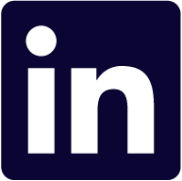Ten ways to build a rapport with your interviewer
You have been invited for a job interview. With these ten tips you will build a rapport with your interviewer, and leave a lasting, good impression.

Read time: 3 minutes | Author: Susie Timlin - COO at UKGI
By fostering a meaningful connection with your interviewer, you will positively impact the outcome of your interview. After all, people recruit people they like.
Ten ways to build a rapport with your interviewer:
1. Smile
Make a conscious effort to smile when you are first introduced, when you say goodbye and regularly throughout the job interview. This may sound like an obvious one, but it’s interesting how many people don’t. I’ve met numerous unsmiling interviewees in my time. Given that nerves will be a factor, make the effort a deliberate one.
2. Shake hands
Be the first to extend your hand for a firm handshake and to greet your interviewer. Again, it may sound obvious, but first impressions really are vital.
3. Maintain eye contact
Establish and maintain eye contact during your meeting. Too much eye contact is clearly off-putting, so look away regularly, but keep that contact. If you never meet your interviewer’s gaze, you will come across as slightly shifty, nervous or disengaged entirely.
4. Remember your interviewer’s name
Make a conscious effort to remember the name of your interviewer (having made sure you’ve heard it properly), and use it quite often and as you leave. It’s an old trick that politicians use when establishing rapport with journalists who interview them, and it’s surprisingly effective!
5. Create a 50/50 dialogue
Create a 50/50 dialogue in which you listen as much as you speak, and don’t save all your questions until the end of the meeting. Show you are interested – and listening – by asking intelligent questions (you should have thought of some relevant questions to ask as part of your preparation to the job interview). You can also sometimes summarise or paraphrase something your interviewer has said, and repeat it back to them in question form. Again, this shows you are paying attention.
6. Remember your interviewer is just another human being
Help your brain put things into perspective and keep those nerves at bay by remembering that your interviewer is just another human being, who may also be feeling anxious. This should help you break down the barriers.
7. Make the interviewer feel important
Do your research on the company, your interviewer and the role you are applying for (LinkedIn is a great resource to help you do this). Nothing helps flatter and build rapport more than a little inside knowledge on the person you’ll be meeting. Come prepared with some follow up questions pertaining to the interviewer to help build a stronger connection – for example, you could ask about their career path or their history with the company.
8. Mirror body language
Imitation is the sincerest form of flattery and mirroring body language can help the interviewer envisage you working with them. Mirroring could be anything from speech patterns and voice tone to gestures, but don’t overdo it, obviously. Match and mirror subtly. Adjusting to the interviewer’s demeanour and behaviour can also help you both feel a little more comfortable.
9. Be memorable – show the real you
Don’t be afraid to let your personality shine through to help your interviewer see who you really are. Answer questions honestly and clearly. Recognising your strengths and weaknesses can help with this.
And remember, an experienced interviewer can easily spot the signs of a candidate who is trying too hard.
10. Follow up afterwards
Follow up the interview with an email thanking the interviewer for their time and reiterate how much you enjoyed meeting them. Send this before the interviewer has a chance to forget you.
Learn what your interviewer pays attention to during, but also before the interview and get to know how to best answer the most frequently asked question ("Why do you want to work here?").





